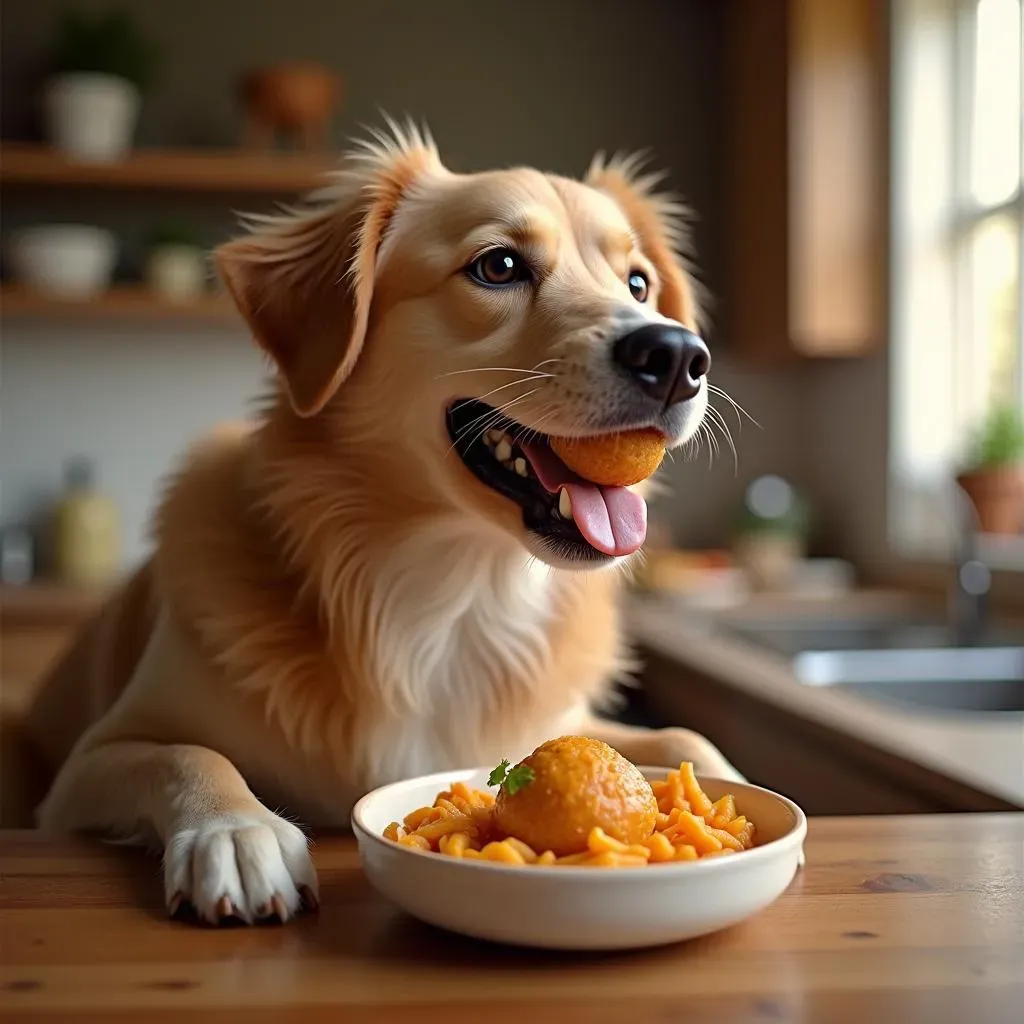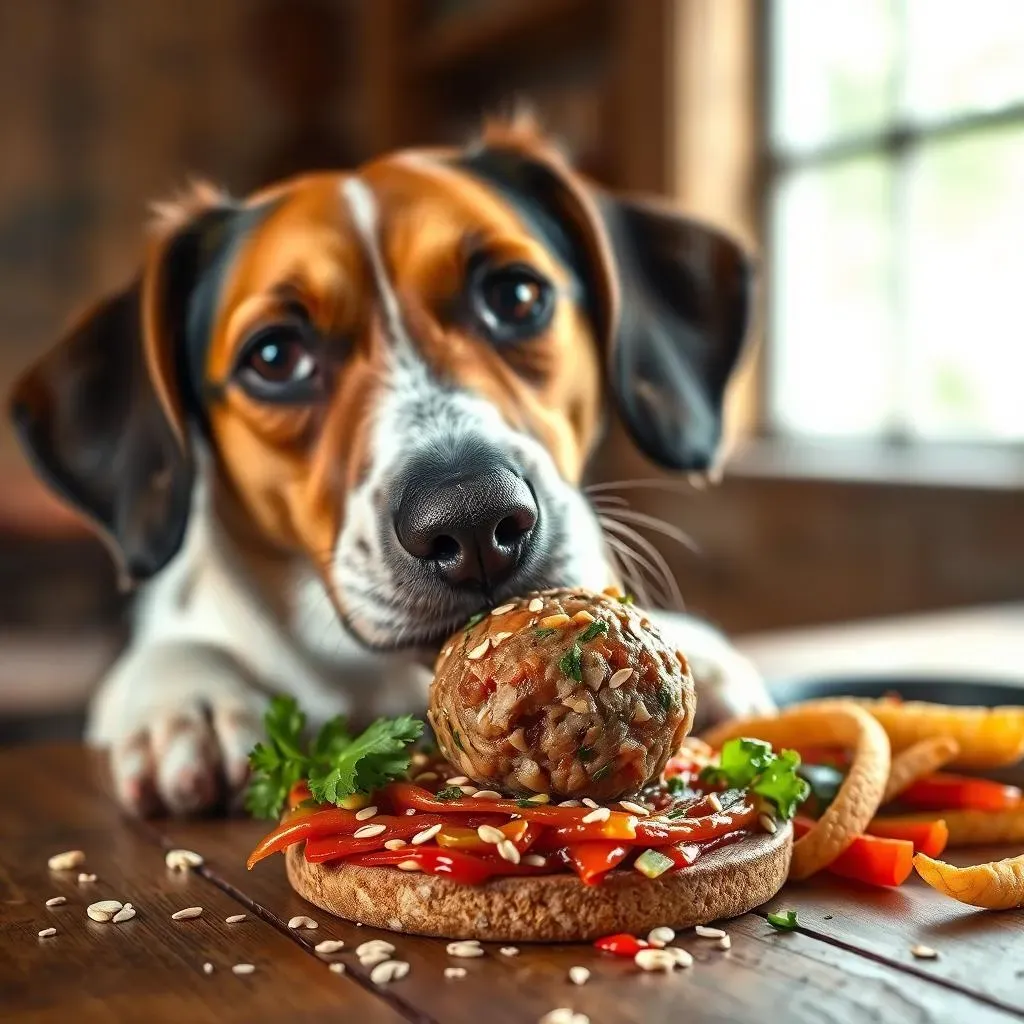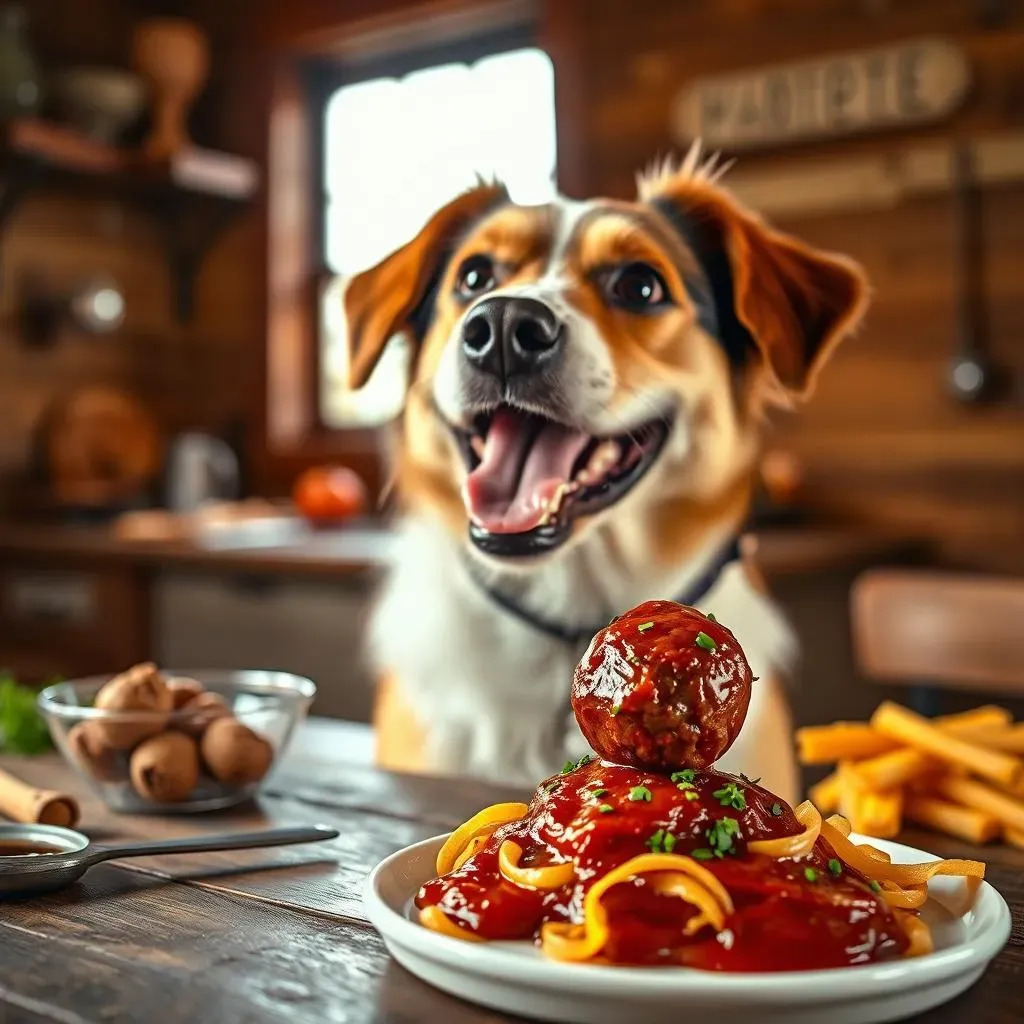Ever wonder what's really in those store-bought dog treats? I did, and it led me down a rabbit hole of ingredients I couldn't even pronounce. That's when I decided to take matters into my own hands, or rather, my own kitchen. I'm talking about making homemade goodies for my furry best friend, starting with a simple yet satisfying chicken meatballs for dogs recipe. This isn't just about avoiding weird additives; it's about making something delicious and nutritious that your dog will go bonkers for. In this article, I'll walk you through my go-to recipe, which uses basic ingredients you probably already have. We'll cover the step-by-step process of making these delectable meatballs, explore fun ways to switch things up with substitutions, and tackle some common questions you might have along the way. Get ready to ditch the store-bought stuff and whip up some love in a meatball for your pup!
Easy Chicken Meatballs for Dogs Recipe

Easy Chicken Meatballs for Dogs Recipe
Simple Ingredients for Happy Pups
Alright, let's get down to business. This easy chicken meatballs for dogs recipe is seriously straightforward. You'll need one pound of lean ground chicken – the leaner, the better for our furry friends. Grab one cup of rolled oats, which act as a binder and provide some fiber. Don't forget about half a cup of grated carrots for a little extra nutrition and sweetness. And finally, one egg to help hold everything together. That's it! No fancy spices or complicated steps, just simple ingredients that are safe and delicious for your dog.
Before you start mixing, make sure your chicken is thawed if you're using frozen. Nobody wants a meatball with a frosty center. Also, finely grate the carrots. Trust me, your dog will appreciate it. Now, toss everything into a bowl and get your hands dirty. Mix all the ingredients until everything is evenly distributed. This is where you get to channel your inner chef, or at least pretend to be one. The mixture should be slightly sticky but not too wet. If it’s too wet, add a little more oats.
Step-by-Step Cooking Instructions
the mixing is done, now comes the fun part: shaping the meatballs! I like to use a tablespoon to scoop out the mixture, then roll them into little balls. Don't worry about them being perfect; your dog won't care if they're a little wonky. Place the meatballs onto a baking sheet lined with parchment paper. This will prevent them from sticking and make cleanup a breeze. Now, pop them into a preheated oven at 375°F (190°C) for about 20-25 minutes, or until they are cooked through. They should be lightly browned and firm to the touch.
Ingredient | Quantity | Purpose |
|---|---|---|
Lean Ground Chicken | 1 pound | Main protein source |
Rolled Oats | 1 cup | Binder and fiber |
Grated Carrots | 1/2 cup | Nutrients and sweetness |
Egg | 1 | Helps bind ingredients |
Cooling and Serving
Once the meatballs are cooked, let them cool completely before serving them to your furry friend. I know it's tempting to give them a taste right away, but hot food can burn their mouths. Once cooled, you can store them in an airtight container in the refrigerator for up to 5 days, or freeze them for up to 3 months. Now, I usually give my dog one or two as a treat, depending on his size. You can also break them into smaller pieces and use them as a food topper for his regular meals. The best part? Seeing that happy tail wag when they get a bite of these homemade goodies!
Variations and Substitutions for Dog Meatballs

Variations and Substitutions for Dog Meatballs
Protein Swaps for Picky Pups
so maybe your dog isn't a huge fan of chicken, or maybe you just want to mix things up a bit. No problem! This chicken meatballs for dogs recipe is super flexible. You can easily swap out the ground chicken for other lean proteins. Ground turkey is a great option, it's mild and easy on the stomach. Ground beef, especially lean ground beef, works really well too. I've even used ground lamb before, which my dog absolutely loved. Just make sure whatever you choose is lean to keep the fat content down. Remember, moderation is key when introducing new proteins. Start small and see how your dog reacts.
Another thing to consider is fish. Canned salmon or sardines (packed in water, not oil!) can be a fantastic source of Omega-3 fatty acids. They add a different flavor profile your dog might enjoy. Just make sure to remove any bones or scales. When I make these, I usually mix a small amount into the meatball mix, rather than doing a full swap. It's a good way to give a nutritional boost without overwhelming the taste buds. So, don't be afraid to experiment and find your dog's favorite protein blend.
Grain and Veggie Tweaks
The recipe calls for rolled oats, but what if your dog has a grain sensitivity? Not a worry! There are plenty of grain-free alternatives. Rice flour is a good substitute, it's easy to find and works well as a binder. Almond flour is another option, though it's a bit more expensive. Just keep in mind that almond flour can have a stronger flavor, so you might want to start with a smaller amount. You could also try cooked quinoa or mashed sweet potato for a different twist. They add moisture and nutrients, which can be a bonus.
As for the veggies, carrots are great, but you can also add other dog-safe veggies. Finely chopped spinach or zucchini are good additions. I've even used a little bit of mashed pumpkin for extra fiber. Just be sure to avoid any veggies that are toxic to dogs, like onions and garlic. When it comes to vegetables, variety is the spice of life. So, play around with different combinations to make it exciting for your furry friend. I sometimes use a veggie mix I buy from the store and it works just fine, sometimes I add a bit of parsley for fresh breath.
Substitution Type | Alternative | Notes |
|---|---|---|
Protein | Ground turkey, lean ground beef, ground lamb, canned salmon, sardines | Choose lean options, remove bones from fish |
Grain | Rice flour, almond flour, cooked quinoa, mashed sweet potato | Adjust quantities as needed |
Vegetables | Spinach, zucchini, mashed pumpkin, parsley | Avoid toxic veggies like onions and garlic |
Flavor Boosters and Safety Tips
Now, I know you might be tempted to add some spices to make these meatballs more appealing, but resist that urge! Dogs have very different systems than humans, and many spices that are safe for us, like salt and pepper, can be harmful to them. So, keep it simple and avoid any seasonings. If you want to add a little something, a small amount of fresh herbs, like parsley or basil, are okay. The main focus should be on the natural flavors of the ingredients. I like to add a small amount of plain yogurt for probiotics and calcium and it gives a great consistency to the meatballs.
One last thing I want to mention is always be careful when introducing new foods to your dog's diet. Start small, and watch for any signs of digestive upset, like vomiting or diarrhea. If you notice anything unusual, stop feeding the meatballs and consult your vet. It's always better to be safe than sorry. Also, make sure all the ingredients you use are fresh and dog-safe. With a little creativity and caution, you can come up with tons of delicious and healthy meatball variations that your dog will love.
Frequently Asked Questions About Homemade Dog Treats

Frequently Asked Questions About Homemade Dog Treats
Are these meatballs suitable for all dogs?
Generally, yes, these meatballs are safe for most dogs, but there are a few things to keep in mind. If your dog has allergies or sensitivities, be extra careful with any substitutions. Always introduce new foods gradually and watch for any adverse reactions. Puppies might need smaller portions, and older dogs with dental issues might prefer softer meatballs. If you have any specific concerns about your dog’s health, it’s always a good idea to check with your vet before making any significant dietary changes.
Another common question I get is about portion sizes. Start with a small amount, like one meatball, and observe how your dog reacts. If they tolerate it well, you can gradually increase the amount. Remember, these meatballs are meant to be a treat or a supplement to their regular meals, not the main course. And always make sure fresh water is available for your dog, especially after they eat something new. The most important thing to remember is that every dog is different, so finding the right balance for them is essential.
Question | Answer |
|---|---|
Can I add spices? | No, avoid spices like salt and pepper. |
How long do they last? | 5 days in the fridge, 3 months in the freezer. |
Can puppies eat them? | Yes, but in smaller portions. |
How do I store these meatballs?
Proper storage is key to keeping these meatballs fresh and safe for your dog. Once they've cooled down, transfer them to an airtight container. You can store them in the refrigerator for up to 5 days. If you’ve made a big batch, or if you don’t think your dog will eat them all within that time, you can freeze them. I like to lay them flat on a baking sheet lined with parchment paper until they're frozen solid, then transfer them to a freezer bag. This way, they don't stick together and you can take out as many as you need at a time. Frozen meatballs can last for up to 3 months. Just make sure to thaw them completely before feeding them to your dog.
Another question I often get is can these be cooked in the microwave. I would advise against it, the texture is different, and it may not cook evenly. The oven is the ideal way to cook them, this way you are sure the meatballs are cooked evenly. When thawing frozen meatballs, it's best to do it in the refrigerator overnight. This helps to maintain their texture and prevent bacterial growth. Don’t leave them out at room temperature to thaw. Proper storage and handling will keep your homemade treats safe and delicious for your furry friend.
Can I use other ingredients?
Absolutely! The beauty of this recipe is how flexible it is. If your dog isn’t a fan of carrots, you can swap them out for other dog-safe veggies like finely chopped spinach, zucchini, or even a bit of cooked sweet potato. You can also play around with different proteins, like ground turkey, beef, or even a mix of different meats. If your dog has grain sensitivities, use rice flour or almond flour instead of oats. The main thing is to make sure all the ingredients are safe for dogs. Avoid anything that's toxic to them, like onions, garlic, grapes, or chocolate. When trying new ingredients, start with small amounts and watch for any adverse reactions. With a little experimentation, you can create a variety of tasty and healthy meatball recipes that your dog will love.
Wrapping Up: Happy Dogs, Happy Bakers
So there you have it, a straightforward chicken meatball recipe that's not only easy to make but also a tail-wagging hit with the canine crowd. You've now got a great way to treat your dog without any of the mystery ingredients found in commercial treats. Making these meatballs is more than just cooking; it's an act of love and care for your furry family member. Don't be afraid to experiment with different ingredients and find what your pup likes best, and remember, a little bit of homemade goes a long way. Happy baking, and even happier dogs!